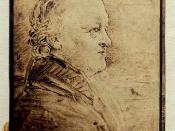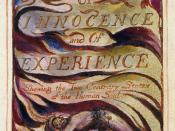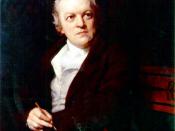William Blake was a brilliant and unconventional English poet best known for his works "Songs of Innocence"� and "Songs of Experience."� In these two works, he used symbolism, which included his own elaborate and personal mythology. The strong and individual way Blake wrote, make it difficult to understand the vast reality of his poems. The poem "A Poison Tree,"� (p 394) taken from his works "Songs of Experience,"� shows a fine example of symbolism with his personal touch.
In "A Poison Tree"� written in 1794, William Blake expresses a tone of realization with resentment for example, "I was angry with my friend: I told my wrath, my wrath did end. I was angry with my foe: I told it not, my wrath did grow."� (lines 1-4) In these lines, Blake explains what results from storing your anger internally instead of releasing it; you become poisoned with the secrecy of your anger.
Throughout this poem the end rhyming scheme of the line is a, a, b, b, for example "æfriend (line 1), "æend (line2), "æfoe (line3), "ægrow (line 4). This classic poem is not a sonnet and uses imagery and metaphors to instill nature, for instance in the third and fourth stanzas "And it grew both day and night, "ÃÂTill it bore an apple bright. And my foe beheld it shine, and he knew that it was mine, and into my garden stole, when the night had veiled the pole; in the morning glad I see my foe outstretched beneath the tree."� (lines 9-16) The connotation carried throughout Blake's poem is if you veil your wrath, it becomes poison within you, takes over your soul and converts you into the poison. The poem begins with a person who is angry with his friend, enlightens him and the...


